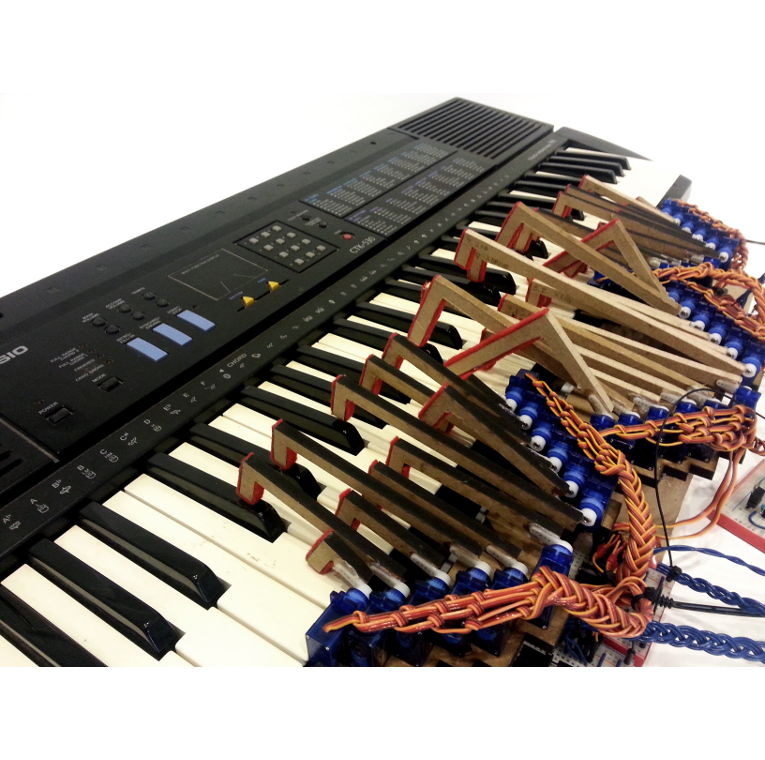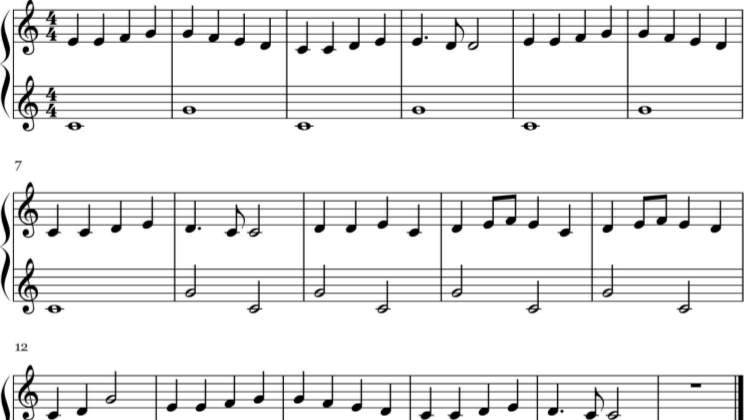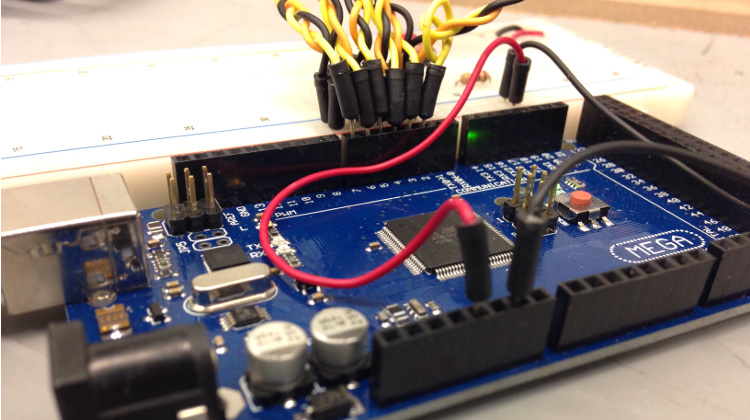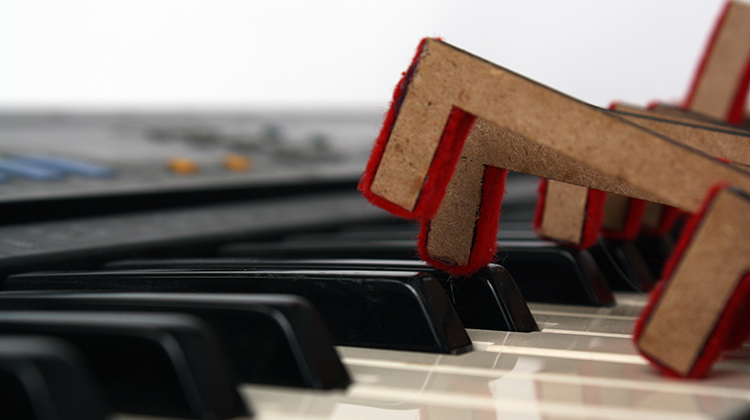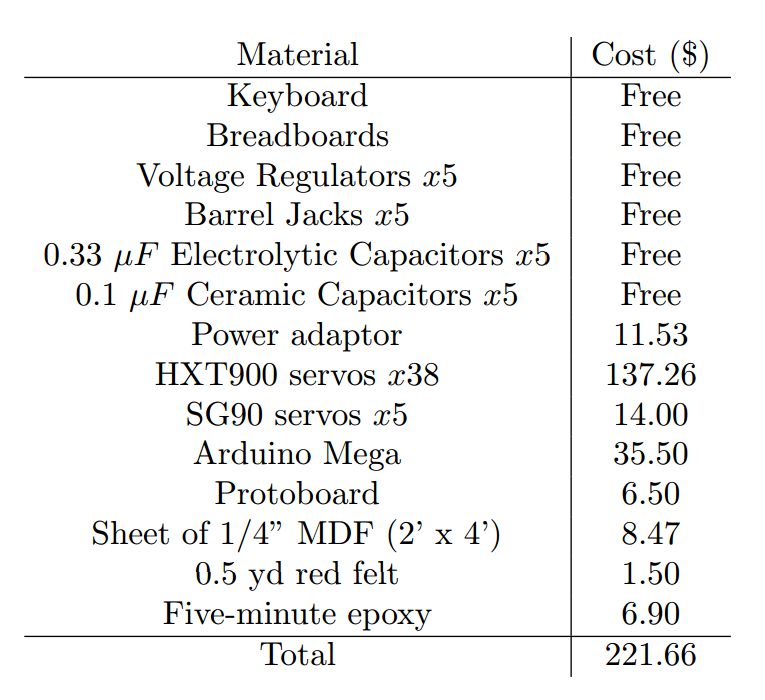The Design, Manufacturing, and Implementation of a Piano-Playing Robot
PianoBot is an autonomous system that takes a sheet music or MIDI sound file input and uses that to play the song using a series of hand-inspired actuators to depress the keys. Additionally, tt has been designed to sit in front of any keyboard. These two design choices make it a robust system that can play any variety of songs available.
Our goals for this project were as follows:
Stretch goals for the project included:
This project was an eight-week undertaking for the Olin College Principles of Engineering (PoE) class in Fall 2014. PoE seeks to teach students to integrate analysis, qualitative design, quantitative optimization, experiments, and simulations to improve their ability to engineer real systems, through a significant project experience designing and building a mechatronic system with nontrivial electrical, mechanical, and software components.
The working system - videos
